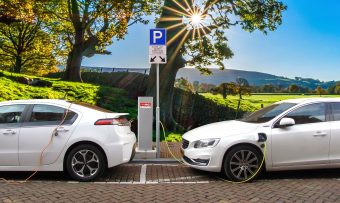
Achieving sustainability in transportation is based on increasing its cost-effectiveness while at the same time increasing the energy efficiency, reducing the negative impact on the environment, preventing (or at least limiting) the harmful consequences on the life and health of the population and the use of renewable energy sources.
When it comes to road and urban public passenger and freight transport, their sustainability depends on the increase in the cost, environmental and energy efficiency. This does not only mean reducing emissions of harmful substances and gases with the greenhouse effect, but also energy saving (in terms of both cost and energy).
In focus:
With the synergy of all three factors we can expect: the reduction of imports and dependence on non-renewable (fossil) energy sources, an increase of vehicle and fleet energy efficiency, a decrease of transport costs and their share in the price of a product, and thus greater product competitiveness, increased traffic safety, a cleaner and healthier environment, better living conditions, as well as more secure future for new generations.

In order to introduce the principles of traffic safety and environmental protection besides the economisation in (poorer), developing countries as part of the requirements in vehicle procurement can only be done by strengthening the awareness of the population and influential social groups that fight for better living conditions.
In addition to the emissions of harmful gases from the transport vehicle itself at the point of consumption (i.e. in the immediate vicinity of the vehicle), the environmental criteria must also include the pollution of the environment which is a consequence of the way of obtaining propulsion energy in the energy sector (i.e. the pollution from nuclear and thermal power plants in electricity generation), but also pollution from vehicle production, i.e. from the automotive industry.
With all this in mind, we can consider the electric vehicles a sustainable form of transport, but only under certain conditions. A properly used electric vehicle should be used rationally and adequately in terms of occupancy (number of transported passengers) or its load capacity (amount of transported cargo); it also needs to consume electricity efficiently and regenerate it during movement, i.e. regenerative braking.
On the other hand, we must not leave out the economy factor of electricity production, i.e. necessary increase in investment in infrastructure for energy production, storage and distribution.
This is of great importance because we are witnessing a rapid increase in the number of consumer electronics in every household. If each household were to purchase only one electric vehicle at a time, we would face a severe blow to the electricity system, the lack of capacity of the electricity distribution network and “restrictions” so well known to us, and not only in developing countries but also in the most developed ones.

Hybrid electric vehicles which both produce electricity and use other forms of propulsion as a substitute, mostly ones based on fossil fuels, have been introduced as a transitional solution towards complete transport electrification.
Developed countries, aware of their social responsibility and the consequences of their current actions on the future, are solving the road transport efficiency problem by focusing on increasing the energy and environmental efficiency of newly manufactured passenger cars while at the same time promoting and subsidising the broader use of sustainable and renewable propulsion vehicles. Whereas in Serbia, the only criterion is still the economic importance of procurement and exploitation of vehicles of certain propulsion. In other words, individual (but also corporate) motor vehicle users do not have the motivation or a “susceptibility” to perceive the importance of the reduction of harmful effects on their surroundings and the environment.
The lack of joint and coordinated strategic action of executive authorities is also noticeable (both the Ministry of Environmental Protection and Ministry of Energy on the one hand, and ministries responsible for finance, transport and internal affairs, on the other hand).
Text by: Professor Vladimir Momcilovic, PHD
Read the whole text in the new issue of the Energy portal Magazine SUSTAINABLE TRANSPORT, september-november, 2020.





